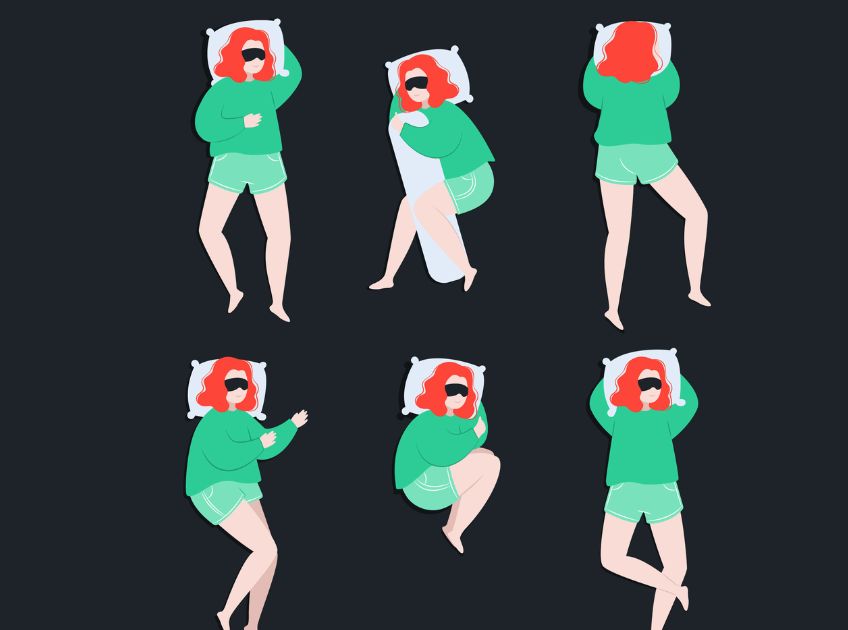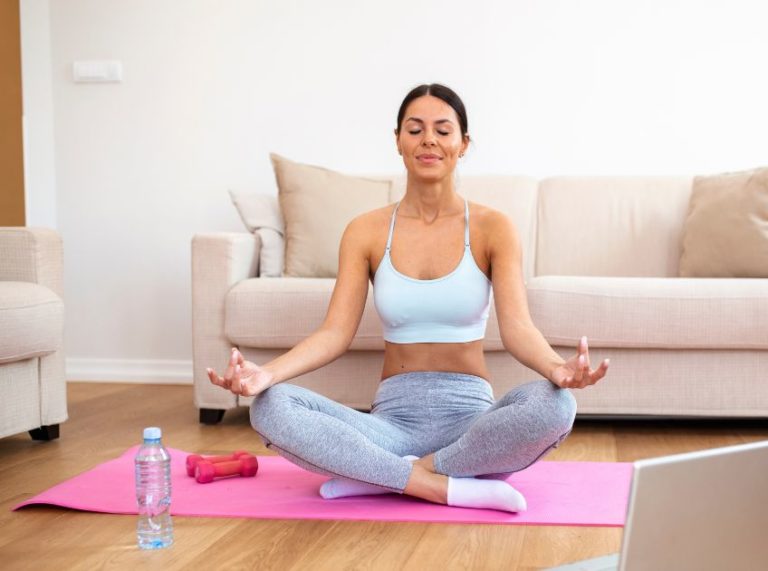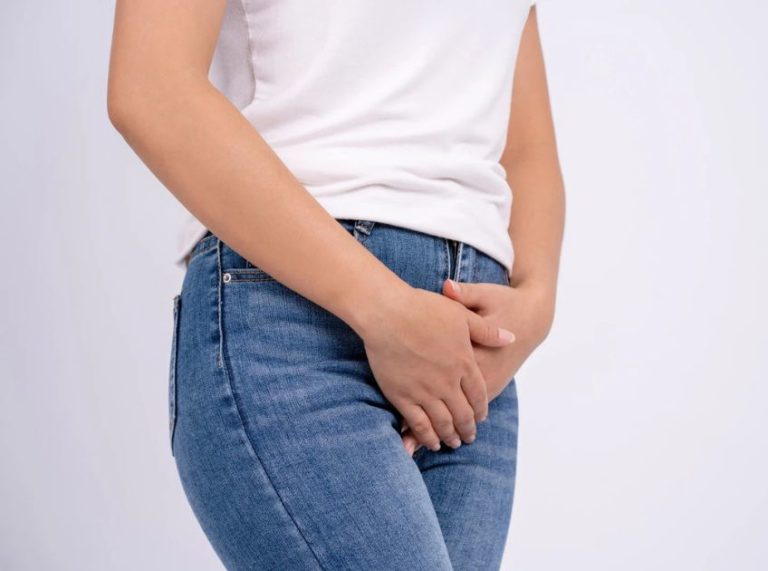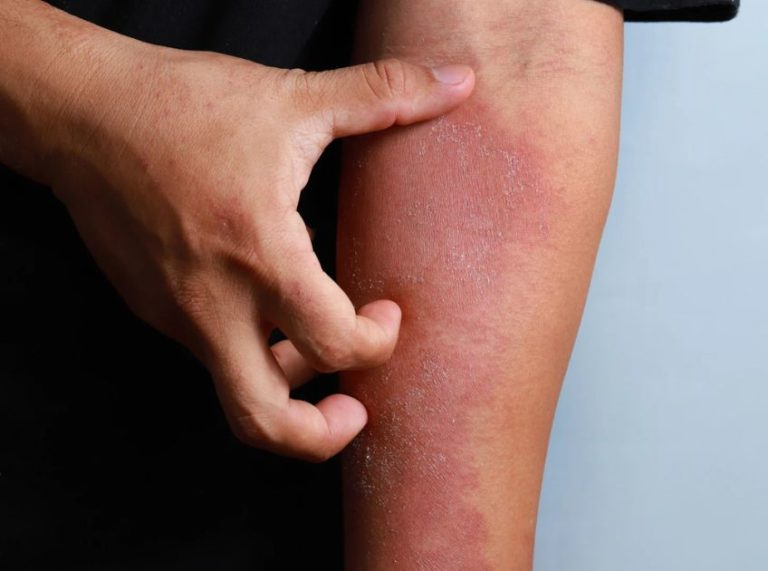
Important: This article is for informational purposes only. Please read our full disclaimer for more details.
Sleep is essential for healing, especially if you’re living with a slipped or herniated disc. The wrong position can aggravate your spine, intensify pain, and delay recovery. The good news? The right sleeping posture can relieve pressure, relax muscles, and support healing while you rest.
What Is a Slipped Disc? A Quick Breakdown
A slipped disc—also known as a herniated or bulging disc—occurs when the soft inner portion of a spinal disc pushes out through a crack in the tougher exterior. This can press on surrounding nerves, causing:
- Sharp or shooting pain (especially in the lower back or neck)
- Numbness or tingling in limbs
- Muscle weakness
It’s most common in the lumbar spine (lower back) and cervical spine (neck), and poor sleeping posture can worsen symptoms.
Best Sleeping Positions for Slipped Disc Relief
Getting quality sleep when you have a slipped disc starts with proper spinal alignment. The goal is to minimize pressure on the affected disc, reduce nerve compression, and relax the surrounding muscles. Below are expert-recommended sleeping positions to help you sleep better and wake up with less pain:
1. Fetal Position (Side-Lying with Knees Drawn)
Best for: Lumbar (lower back) herniated disc
This position opens the spaces between your vertebrae, reducing disc compression. It also aligns the spine gently, relieving pressure on spinal nerves.
How to do it right
- Lie on your side with your knees slightly pulled toward your chest (not tightly curled).
- Keep your spine naturally curved, not hunched.
- Use a firm pillow to support your head so it’s level with your spine.
- Place a thin pillow between your knees to reduce strain on your hips and lower spine.
Why it helps
According to spine health experts, the fetal position increases the intervertebral space, helping prevent nerve pinching and easing radiating pain (sciatica).
2. Back Sleeping with a Pillow Under the Knees
Best for: Lumbar disc herniation, neck disc problems
Sleeping on your back distributes your weight evenly and keeps the spine aligned. Adding a pillow under your knees enhances the natural lumbar curve, reducing pressure on the lower discs.
How to do it right
- Lie flat on your back.
- Place a pillow or rolled towel under your knees to slightly bend them.
- Use a cervical pillow or rolled towel under the neck for support.
- Avoid thick pillows that elevate your head too high.
Why it helps
This posture keeps the spine in a neutral, relaxed position and reduces tension in the lower back muscles. A 2017 clinical study found that it improves sleep quality in lumbar disc herniation patients (1).
3. Reclined Sleeping (Elevated Torso Position)
Best for: Severe lumbar disc pain or spondylolisthesis
Sleeping with your upper body slightly elevated helps relieve pressure on the lower spine and opens the space between vertebrae.
How to do it right
- Use an adjustable bed or a wedge pillow to elevate your torso at a 30–45° angle.
- Bend your knees slightly and place a pillow under them for extra support.
- Use a supportive neck pillow that maintains cervical alignment.
Why it helps
This position mimics the posture used in some spinal surgeries to reduce disc pressure. It reduces shearing forces across the lumbar spine, especially helpful if standing or lying flat increases your pain.
4. On Your Stomach with a Pillow Under the Abdomen
Best for: Specific lumbar disc cases where extension relieves pain (rarely used)
Generally, stomach sleeping is discouraged, but in some cases (especially where flexion aggravates pain), a modified stomach position can offer relief.
How to do it right
- Lie on your stomach.
- Place a thin pillow or folded towel under your lower abdomen to reduce lumbar stress.
- Use a very flat pillow or no pillow under your head to avoid neck strain.
Why it helps
This position may ease disc bulging in patients who respond well to spinal extension (arch-like postures). Always consult a physical therapist before trying this.
5. Side Sleeping with a Pillow Between Knees and Under the Waist
Best for: Both lumbar and cervical herniation
If one side feels more comfortable, side sleeping can help, but you need proper support to keep the spine aligned.
How to do it right
- Lie on your side (preferably the non-painful one).
- Place a firm pillow between your knees to prevent spinal twisting.
- Slide a small towel or pillow under your waist if there’s a gap.
- Use a contoured pillow for head support if you have cervical issues.
Why it helps
Minimizing spinal rotation while side-sleeping keeps the vertebrae and discs aligned, easing nerve pressure and muscular tension.
Additional Tip
Invest in a medium-firm mattress that offers even support and doesn’t sag under pressure points. Memory foam or orthopedic mattresses can adapt to your spine’s natural curves and provide extra comfort.
Sleeping Positions You Should Avoid
Some positions can aggravate the disc and increase inflammation:
- Flat on your stomach (without support): Can strain the neck and compress the lower spine
- Twisting or contorting postures: Avoid curling half your body or twisting the spine, especially if using a soft mattress
- Too high or too flat pillows: May misalign the cervical spine and increase neck pain
Backed by Science: Why Sleep Position Matters
Several studies support the relationship between spinal alignment during sleep and disc-related pain relief:
- A study published in The Journal of Physical Therapy Science (2017) noted that lumbar support during sleep significantly reduced back pain and improved sleep quality in herniated disc patients (2)(1).
- The Journal of Chiropractic Medicine highlighted that side-sleeping with proper hip and shoulder support minimizes pressure on spinal discs (3).
- Another research article in Spine (2003) emphasized that sleeping posture impacts disc hydration and recovery, especially during nighttime rest (4).
Proper alignment during sleep helps reduce nerve impingement, promotes disc rehydration, and prevents further disc degeneration.
Frequently Asked Questions (FAQ’S)
Q1. Can the right sleeping position heal a slipped disc completely?
A. No, but it can significantly reduce symptoms and prevent further damage while supporting the body’s natural healing process.
Q2. Is sleeping on the floor better for slipped discs?
A. Sleeping on a hard surface may help some people by providing more support, but it’s not universally recommended. Always prioritize comfort and proper alignment.
Q3. Should I use a heating pad while sleeping?
A. It’s not advised to use a heating pad overnight. However, using it before bed may relax muscles and ease pain.
Managing a slipped disc doesn’t stop at physical therapy or medication—it extends into how you sleep. The right sleep position can alleviate pressure on your spine, reduce inflammation, and promote better rest. Pair good sleep hygiene with physical therapy and ergonomic support, and your body will thank you each morning.















